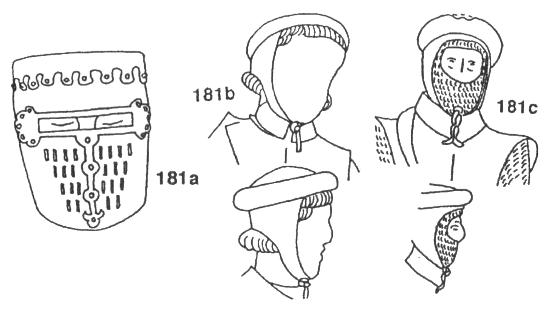Wells Cathedral, c.1230-40
|
|

Wells Cathedral, c.1230-40
|
|

Referenced on p.73, Arms and Armour of the Crusading Era, 1050-1350, Western Europe and the Crusader States by David Nicolle
181A-C Statues, Somerset, 1230-40
(in situ west front of Cathedral, Wells, England)
Most of the armoured figures on the facade of Wells Cathedral wear standard mail hauberks and chausses. One, or perhaps two, figures (B and C) have the angled shoulders that suggest padded gambesons beneath the surcoats. The possibility that some padding or even stiffening formed an integral part of the surcoat is reinforced by the raised and clearly stiffened collars that protect the throats of two figures (B and C). One figure (C) has a mail hauberk and coif beneath these padded elements, while another does not (B). Both, however, wear cloth coifs with large padded squabs around the head which are obviously intended to support great helms. One such great helm is present in the Wells carvings (A). It is of an early form with a single broad eye-slit reinforced at the edges by an additional piece of metal which also runs down the front of the helmet. The top plate is turned over the edge and riveted.